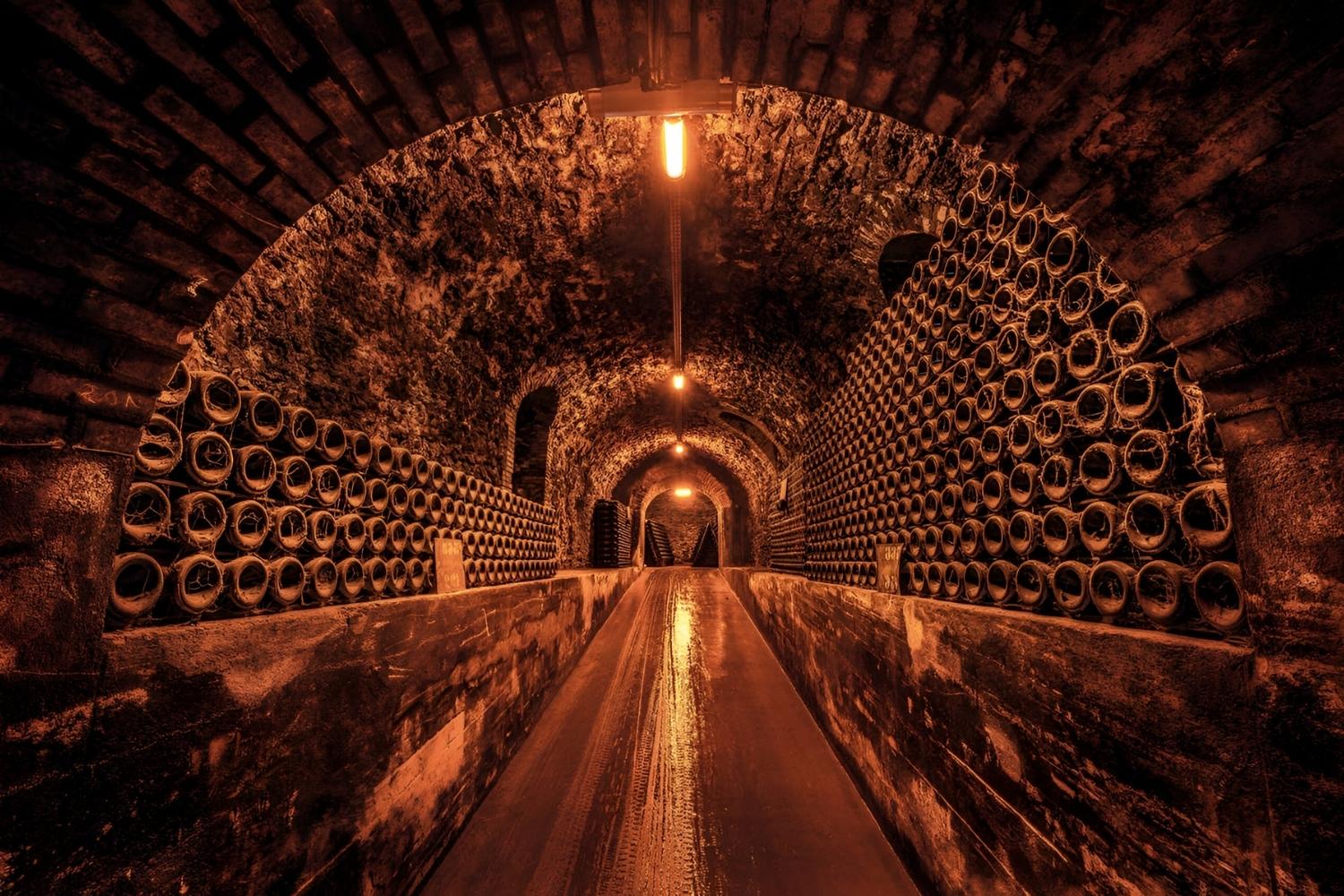Lost Underground Wine Cellars Of Champagne: Forgotten Bubbly Vaults

Have you ever wondered where some of the world’s finest Champagne ages to perfection? Hidden beneath the rolling hills of France lie the lost underground wine cellars of Champagne. These ancient vaults, carved from chalk, provide the perfect environment for aging bubbly. Imagine walking through cool, dimly lit tunnels lined with dusty bottles, each holding a story of its own. These cellars, some dating back to Roman times, are a testament to the region's rich history and dedication to winemaking. Join us as we uncover the secrets of these forgotten bubbly vaults and learn why they are so special.
The Hidden Treasures of Champagne
Champagne, France, is famous for its sparkling wine. Beneath its picturesque vineyards lie forgotten underground wine cellars. These hidden vaults hold centuries of history and bubbly secrets. Let's explore some of these fascinating places.
1. The Cellars of Moët & Chandon
Moët & Chandon, one of the most renowned Champagne houses, has an extensive network of underground cellars. These cellars stretch for miles beneath the town of Épernay.
- Labyrinthine Tunnels: The cellars span over 17 miles, creating a maze-like structure.
- Aging Process: Bottles rest here for years, developing their unique flavors.
- Historic Significance: Some sections date back to the 18th century.
2. Veuve Clicquot's Secret Vaults
Veuve Clicquot, another iconic name in Champagne, also boasts impressive underground cellars. These vaults are not just for storage but also for preserving history.
- Ancient Chalk Quarries: Originally chalk quarries, these cellars provide perfect conditions for aging Champagne.
- Madame Clicquot's Legacy: The cellars hold bottles from the era of Madame Clicquot, the "Grande Dame of Champagne."
- Unique Artifacts: Visitors can find old tools and equipment used in Champagne production.
3. Ruinart's Historic Cellars
Ruinart, the oldest established Champagne house, has cellars that are a testament to its long history. These cellars are a blend of tradition and innovation.
- Deep Underground: The cellars are located 40 meters below ground, ensuring a constant temperature.
- Art and Wine: Ruinart often hosts art exhibitions in its cellars, blending culture with winemaking.
- Oldest Bottles: Some of the oldest bottles of Champagne are stored here, dating back to the 18th century.
4. Taittinger's Roman Cellars
Taittinger’s cellars are unique due to their Roman origins. These ancient cellars add a historical depth to the Champagne experience.
- Roman Ruins: The cellars were originally part of Roman stone quarries.
- Monastic Influence: Monks used these cellars in the 13th century for winemaking.
- Modern Use: Today, Taittinger uses these cellars to age its prestigious Comtes de Champagne.
5. Pommery's Artistic Cellars
Pommery’s cellars are not just about wine; they are a celebration of art and culture. These cellars are a must-visit for those who appreciate both fine wine and fine art.
- Art Installations: The cellars feature contemporary art installations, creating a unique atmosphere.
- Historic Architecture: The cellars themselves are architectural marvels, with grand arches and intricate designs.
- Cultural Events: Pommery hosts various cultural events in its cellars, making them a lively and vibrant place.
6. The Hidden Cellars of Bollinger
Bollinger, known for its robust and full-bodied Champagne, has cellars that are as impressive as its wines. These cellars are a blend of tradition and modernity.
- Family Heritage: The Bollinger family has maintained these cellars for generations.
- Vintage Collections: The cellars house an extensive collection of vintage Champagnes.
- Modern Techniques: Bollinger uses modern techniques alongside traditional methods in its cellars.
7. The Forgotten Vaults of Henri Giraud
Henri Giraud’s cellars are lesser-known but equally fascinating. These cellars offer a glimpse into the artisanal side of Champagne production.
- Small Scale: Unlike the grand cellars of bigger houses, Henri Giraud’s cellars are more intimate.
- Oak Barrels: The cellars are known for using oak barrels, giving their Champagne a unique flavor.
- Exclusive Tastings: Visitors can enjoy exclusive tastings in these cozy cellars.
8. The Mystical Cellars of Drappier
Drappier’s cellars have an air of mystery and charm. These cellars are perfect for those who love exploring hidden gems.
- Historic Charm: The cellars date back to the 12th century, adding a sense of history.
- Eco-Friendly Practices: Drappier uses eco-friendly practices in its cellars, making them unique.
- Rare Finds: The cellars house some rare and exclusive Champagnes.
9. The Enigmatic Vaults of Billecart-Salmon
Billecart-Salmon’s cellars are known for their elegance and sophistication. These cellars are a true reflection of the house’s philosophy.
- Elegant Design: The cellars are beautifully designed, with a focus on elegance.
- Aging Process: The cellars are used for the long aging process, ensuring high-quality Champagne.
- Exclusive Tours: Visitors can enjoy exclusive tours of these stunning cellars.
10. The Secret Cellars of Pol Roger
Pol Roger’s cellars are steeped in history and tradition. These cellars are a testament to the house’s commitment to quality.
- Historic Depth: The cellars date back to the 19th century, adding a sense of history.
- Royal Connection: Pol Roger’s cellars have a royal connection, with Winston Churchill being a famous admirer.
- Quality Focus: The cellars are used to ensure the highest quality of Champagne.
Hidden Treasures of Champagne
The underground wine cellars of Champagne hold more than just bottles. They are a glimpse into history, tradition, and craftsmanship. Exploring these forgotten vaults reveals the dedication and passion that goes into every bottle of bubbly. Each cellar tells a unique story, from ancient Roman times to modern-day winemaking. Visiting these hidden gems offers a deeper appreciation for the art of Champagne production. Whether you're a wine enthusiast or just curious, these cellars are worth the trip. They remind us that sometimes, the best treasures are hidden just beneath the surface. So next time you're in Champagne, take a moment to venture underground. You might just find a new favorite vintage and a story to share. Cheers to the hidden treasures of Champagne!

